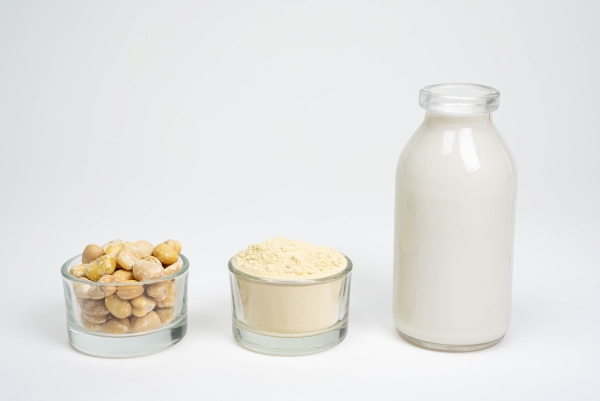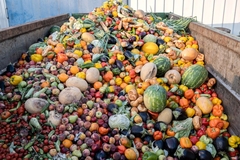What’s driving ingredient innovation in protein-forward dairy alternatives?
Key takeaways
- Consumers drive the next wave of dairy alternatives, demanding clean label, high-protein options that deliver true dairy-like indulgence.
- Ingredient suppliers say success now hinges on creamy mouthfeel, balanced nutrition, and transparent sourcing.
- Innovators blend science and sensory performance to meet rising expectations for gut health, convenience, and authentic dairy-like experiences.
The market growth of plant-based dairy alternatives is now being driven directly by consumers who no longer take an “all or nothing” approach to protein consumption. Aligned with Innova Market Insights’ top trend for 2026, “Powerhouse Protein,” consumers are looking for clean label dairy alternatives with added health benefits like high protein, but also indulgence for the senses.
Many F&B innovators are targeting these trends in innovative food concepts, catering to today’s more conscious consumers. We speak with several ingredient suppliers who share their expertise on the evolution of dairy alternatives and look at what’s to come.
Dr. Pia Meinlschmidt, head of product management at Planteneers, highlights that delivering creamy texture and a balanced nutritional profile in dairy-free products is key to success. “We continuously explore new functional raw materials and processing technologies to replicate the indulgent mouthfeel of dairy while ensuring clean label formulations.”
For Jiae Kim, market segment leader for Food and Nutrition at Roquette, dairy alternatives are entering a new phase — one that blends health, indulgence, and sensory satisfaction.
“Consumers want the same texture, creaminess, and protein content as traditional dairy, but with the added benefits of plant-based nutrition. Historically, there’s been a compromise — a gap between consumers’ expectations and what’s actually available in the chilled aisle.”

Meanwhile, Corinna Faustmann, director of R&D for Dairy at Cargill, says transparency is crucial, and functionality remains essential. “Systems and tailored solutions support a wide spectrum of formulation goals — from label-friendly and nutritionally balanced recipes to plant-based or free-from product development.”
Plant-forward consumption drives growth
According to ADM’s Outside Voice Research, the majority of global plant-forward consumers — defined as flexitarians, vegetarians, or vegans — believe it is healthier to get protein from a wide variety of sources.
“This demand includes protein sources helping to fortify dairy and alternative dairy products further. Shoppers seek offerings that can provide protein diversity and higher protein content,” says Bastian Hörmann, global marketing director, Sweet Goods, Dairy and Specialized Nutrition at ADM.
“Shoppers want protein diversity and higher protein content, and consumers may also seek out plant-based alternatives to certain dairy products to support their individual dietary needs. These compounding factors have led to a combination of purchasing plant-based dairy alternatives and traditional dairy, along with emerging opportunities for hybrid innovations in the dairy aisle.”
Across all plant-based product segments, taste and nutrition are of equal value to plant-forward consumers, he notes, citing ADM’s research. “However, each aspect of the sensory experience, from visual appeal to flavor and mouthfeel, must be considered to capture and hold consumer attention.”
“Even in plant-based formats, consumers expect alternative dairy products to have a smooth, rich, and creamy texture. Improved taste, texture, and cost must also be achieved to support ongoing and increased trials in this sector.”
While health, nutritional benefits, and variety of protein sources are the top motivators driving consumers to consume dairy alternatives, there is still room for improvement in terms of higher nutritional value in these products, flags Hörmann.
According to Roquette’s Kim, the clean label movement is “redefining expectations.” She says, “It’s about trust as much as taste. And as convenience continues to drive decision-making, brands that deliver clean, balanced, ready-to-use plant-based options are clearly positioned to win in this next chapter of dairy alternatives.”
Building functionality & sustainability into formulations
With demand for allergen-free and lactose-free products on the rise, Roquette says it develops plant proteins that make dairy-free options feel like an indulgence, not a compromise. “When using ingredients, we are looking to strike the right balance between nutrition, texture, and clean labeling,” notes Kim.
“Importantly, sustainable sourcing is at the root of our plant protein strategy. Pulses, such as peas and fava beans, can not only reduce their environmental footprint but also promote local agriculture. These crops naturally fix nitrogen in the soil, reducing the need for fertilizers and irrigation, improving soil health, and supporting regenerative farming over time. They’re also reliable for temperate arable production, offering commercial viability for farmers in milder climates.” Consumers read ingredient lists more carefully, pushing formulators to simplify recipes, use recognizable ingredients, and prioritize local, traceable sourcing.
Consumers read ingredient lists more carefully, pushing formulators to simplify recipes, use recognizable ingredients, and prioritize local, traceable sourcing.
“This combination of environmental efficiency, local sourcing, and strong functionality translates directly into market appeal. Today’s consumers want to feel good about what they eat and where it comes from. By formulating with responsibly sourced ingredients, brands can tell a story that connects sustainability with taste, texture, and trust. Transparency is no longer a trend, it’s a reason to buy.”
For Cargill, meeting the demand for dairy-free innovation requires the business to focus on solutions that replicate the rich mouthfeel and nutrition of dairy, “without the common triggers, Faustmann tells us. “Our Infuse functional systems integrate non-dairy starches, plant proteins, and emulsifiers that build back creaminess and deliver a satisfying sensory profile.”
“For fortification, we’re exploring combinations that naturally improve protein and fiber content in dairy-free formats. And since texture is often the biggest challenge, especially in low-fat or low-sugar formulations, our SimPure Bright starch was developed specifically to support creaminess in color-sensitive, dairy-free applications — while also improving energy efficiency during processing.”
The future of fermented & hybrid advancements
Faustmann believes that fermentation is “a game-changer,” whether it’s applied to improve texture and shelf life or to unlock flavor in cultured dairy alternatives. Fermentation’s role is also expanding quickly in the ingredient manufacturing space, she says.
“We’re particularly excited about precision fermentation, which is used to produce EverSweet — our zero-calorie stevia sweetener that helps brands reduce sugar in plant-based yogurts and drinks without sacrificing taste.”
Meanwhile, she flags the rise of hybrid applications, which help manufacturers meet nutritional, sensory, and environmental expectations. “These formats also allow greater flexibility in formulation and are especially well-suited for yogurt, cheese, and dessert applications where taste and indulgence must coexist.”
Taste and texture are non-negotiables for the success of hybrid dairy products, adds Faustmann. “Cargill’s approach is to help customers develop flexible formulations — leveraging plant proteins, vegetable fats, and label-friendly texturizers that support dairy-like functionality, even under harsh processing conditions.”
“We address stability in live cultures and probiotic-friendly formats using blended functional systems that help maintain viscosity and sensory consistency. Our co-creation model focuses on tailoring solutions to specific process requirements, whether it’s stirred hybrid yogurts or a drinkable hybrid dairy concept,” she says.
Meinlschmidt at Planteneers observes that cultured plant-based products are evolving through the targeted use of fermentation to achieve authentic dairy-like texture and flavor. Taste and texture are “non-negotiables” for the success of hybrid dairy products.
Taste and texture are “non-negotiables” for the success of hybrid dairy products.
“Lactic acid bacteria help reduce off-notes and build pleasant, creamy taste profiles, while exopolysaccharide-producing cultures naturally improve viscosity and stability. Co-fermentation approaches further refine flavor, enhance water-holding capacity, and extend shelf life. These advances make it possible to create plant-based alternatives that are both indulgent and nutritionally balanced,” she says.
Planteneers has developed integrated ingredient systems that bridge the gap between traditional dairy products and plant-based concepts.
“Our hybrid solutions combine compelling taste with reliable process stability and balanced nutrition, allowing manufacturers to reduce dairy content without compromising sensory quality. We design the base composition to deliver a smooth, creamy texture even under heat treatment, supported by optimized protein interactions and natural stabilizing systems.”
Furthermore, fermentation plays a crucial role in creating authentic dairy-like flavor profiles and enhancing digestibility, says Meinlschmidt. “To meet modern demands, we incorporate customized micronutrient blends developed with our sister company SternVitamin. This approach enables us to offer versatile, clean label solutions that make the transition toward more sustainable, hybrid dairy products both feasible and delicious.”
Alternative & hybrid blended dairy
ADM’s Hörmann also sees expanded product development within alternative and hybrid or blended dairy, championing convenience and functionality.
“Notably, in the US, 68% of flexitarians and 57% of carefree consumers are interested in hybrid dairy. Additionally, nearly 40% of global plant-forward consumers want to see enhanced health benefits from future plant-based food and beverage options,” he says.
Specifically, consumers are recognizing the role the gut microbiome plays in different aspects of well-being, with solutions like pre-, pro-, and postbiotics moving into the limelight to support digestive, immune, metabolic, and muscle health.
“When adding on-trend biotics to dairy, and alternative dairy-based formulations, product developers should leverage resilient strains to ensure efficacy through tough formulation environments and mitigate impact on the sensory experience,” continues Hörmann.
“Postbiotics do not contain live microorganisms, which means they can withstand pasteurization or high heat during formulation, making them suitable for nearly any application, from traditional to alternative dairy products.”











